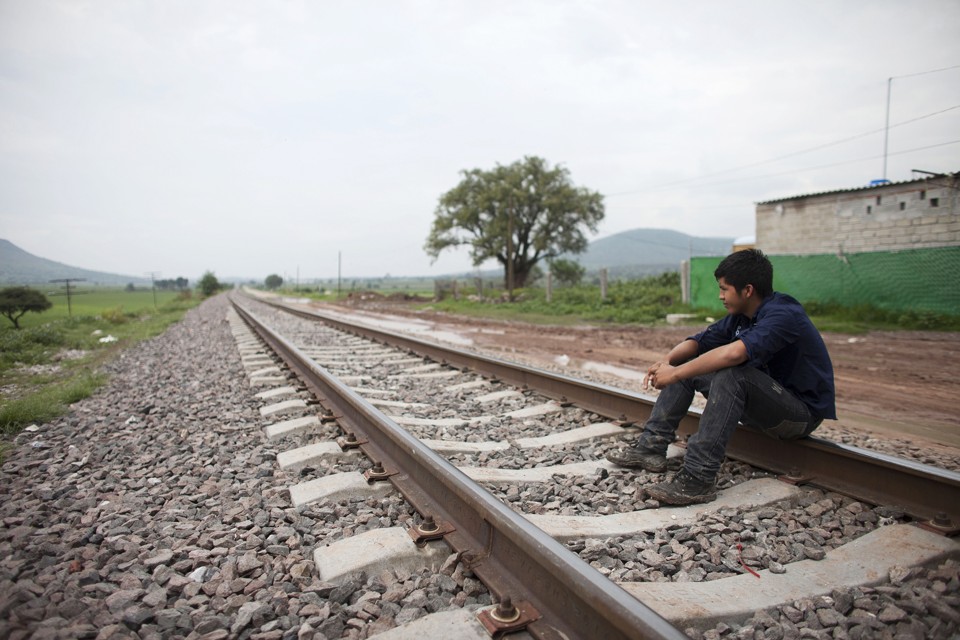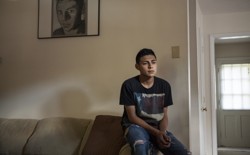Across the Border and Into School
Thousands of Central American children made a harrowing journey to the United States. Now they are navigating the arduous process of getting an education.

A young migrant from Honduras sits on the railway tracks in Huehuetoca, on the outskirts of Mexico City. Alexandre Meneghini / Reuters
Most reporters’ accounts of their journeys have detailed their vexing treks and the immediate aftermath of their arrivals; the media has chronicled the possibility—now largely dead—of immigration reform and the ramifications of the surge in unaccompanied minors on U.S. politics. But much less has been reported about the long-term question of what actually happens once these young people are sent to live with family or other caregivers. Across the United States, children are now attempting to build lives for themselves, contending with immigration hearings, and facing the looming possibility of deportation.
Cities have responded to this mandate in distinct ways: In some, a network of programs shepherds families through bureaucratic hurdles, making the process of enrolling in and attending school less daunting. In others, schools and volunteers have cobbled together a tenuous hodgepodge of resources to try and help. But some communities have erected roadblocks—sometimes deliberately, other times because they don’t understand the law—that have made being a student in a new country that much harder.
One day in 2014, Jose, a statuesque 17-year-old with smooth dark skin and short curly hair, told the relatives he lived with in Honduras that he had decided to go north. He had been raised in the murder capital of the world. His father was dead. And Jose wanted to be with his mother, who had traveled to America when he was just a boy. And so, he left.
Jose traveled alone through Guatemala and then through Mexico by train and on foot. It was a difficult trip, and—until immigration officials finally picked him up at the Texas border—he feared he might die of hunger or at the hands of drug cartels every step of the way. As Jose huddled in a frigid detention facility, the authorities tracked down his mother, Dania.I met Jose (I’ve agreed not to identify him by his full name to preserve his privacy) in the spring of last year at his family’s tiny apartment in a sprawling complex in one of New York City’s poorest neighborhoods. There, Dania earns what she can at a local butcher shop, but she can barely cover the basics. I visited on a warm day and the apartment was stifling. Jose told me about his journey in Spanish—in a voice almost devoid of emotion—as he sat crammed onto a sofa next to his relatives, all of whom are also undocumented. It was a family that finally felt whole again but that was also desperately fragile after nearly a decade apart. As Unaccompanied Minors Turn to Schools Across the Country for an Education - The Atlantic:

